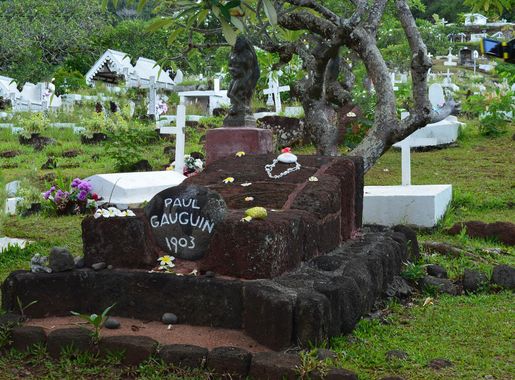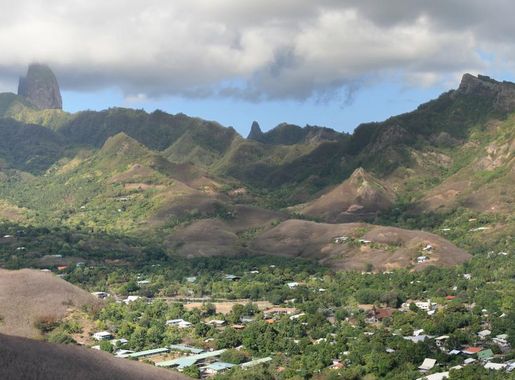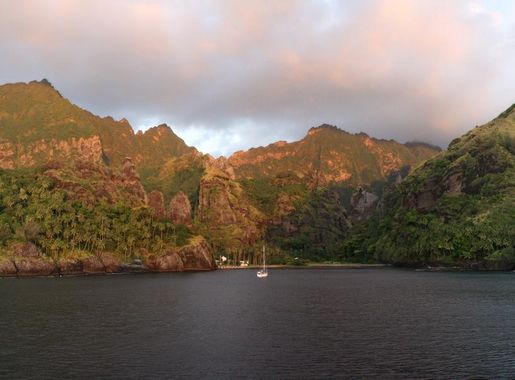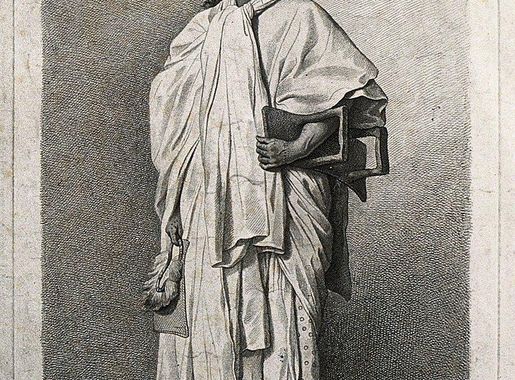
Marquesas Islands: The Untamed Beauty of French Polynesia
Discover the untamed beauty and rich cultural heritage of the Marquesas Islands, a hidden gem in French Polynesia perfect for adventurers and nature lovers.
Nestled in the heart of the Pacific Ocean, the Marquesas Islands offer a unique blend of raw natural beauty and rich cultural heritage. These islands are a paradise for adventurers and those seeking an escape from the hustle and bustle of modern life. With lush green valleys, towering cliffs, and pristine beaches, every corner of the Marquesas is a scenic masterpiece waiting to be explored. The Marquesas Islands are known for their vibrant traditional culture. Visitors can immerse themselves in the local way of life by attending traditional dance performances, exploring ancient stone carvings, and visiting the many archaeological sites scattered across the islands. The local people, known for their hospitality, are eager to share their stories and traditions with visitors. For nature lovers, the Marquesas Islands are a dream come true. The islands are home to a variety of unique flora and fauna, some of which can't be found anywhere else in the world. Hiking through the dense forests, snorkeling in the clear waters, or simply relaxing on the beach, there are endless opportunities to connect with nature. The islands also offer excellent conditions for water sports, including surfing, diving, and fishing.
Local tips in Marquesas Islands
- Pack light but bring essentials like sunscreen, insect repellent, and a reusable water bottle.
- Learn a few basic phrases in French or the local Marquesan language to enhance your interactions with locals.
- Be prepared for limited internet and mobile phone coverage; enjoy the digital detox.
- Try local delicacies like poisson cru (raw fish salad) and breadfruit.
- Respect local customs and traditions, especially when visiting sacred sites.
Marquesas Islands: The Untamed Beauty of French Polynesia
Nestled in the heart of the Pacific Ocean, the Marquesas Islands offer a unique blend of raw natural beauty and rich cultural heritage. These islands are a paradise for adventurers and those seeking an escape from the hustle and bustle of modern life. With lush green valleys, towering cliffs, and pristine beaches, every corner of the Marquesas is a scenic masterpiece waiting to be explored. The Marquesas Islands are known for their vibrant traditional culture. Visitors can immerse themselves in the local way of life by attending traditional dance performances, exploring ancient stone carvings, and visiting the many archaeological sites scattered across the islands. The local people, known for their hospitality, are eager to share their stories and traditions with visitors. For nature lovers, the Marquesas Islands are a dream come true. The islands are home to a variety of unique flora and fauna, some of which can't be found anywhere else in the world. Hiking through the dense forests, snorkeling in the clear waters, or simply relaxing on the beach, there are endless opportunities to connect with nature. The islands also offer excellent conditions for water sports, including surfing, diving, and fishing.
When is the best time to go to Marquesas Islands?
Iconic landmarks you can’t miss
Nuku Hiva Keikahanui Pearl Lodge
Discover tranquility and luxury at Nuku Hiva Keikahanui Pearl Lodge, where breathtaking views and Polynesian hospitality await.
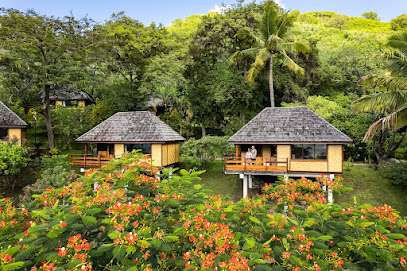
Hôtel Hiva Oa Hanakee Lodge
Discover the serene beauty of Hôtel Hiva Oa Hanakee Lodge, where comfort meets the stunning landscapes of French Polynesia.

Pension Temetiu Village
Discover the serene beauty of Hiva Oa at Pension Temetiu Village, your perfect retreat in French Polynesia.

Nuku Hiva
Discover the untamed beauty and rich culture of Nuku Hiva, the largest island in the Marquesas archipelago, a true paradise in French Polynesia.
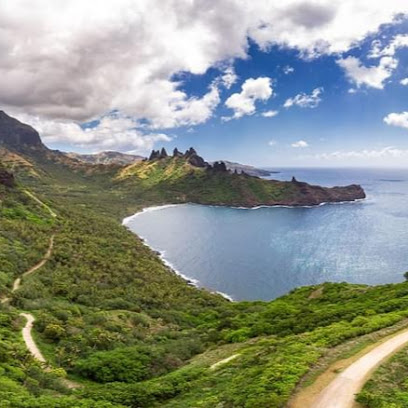
Snack Vaeaki
Experience the flavors of Nuku Hiva at Snack Vaeaki, where local ingredients meet international cuisine in a stunning Polynesian setting.
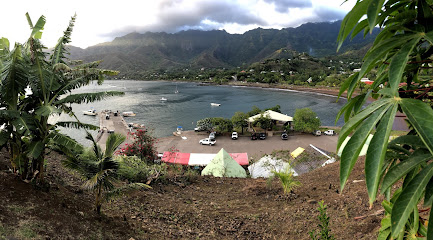
Vaipō Waterfall
Experience the breathtaking beauty of Vaipō Waterfall, one of the tallest waterfalls in the South Pacific, nestled in the heart of Nuku Hiva's lush landscapes.
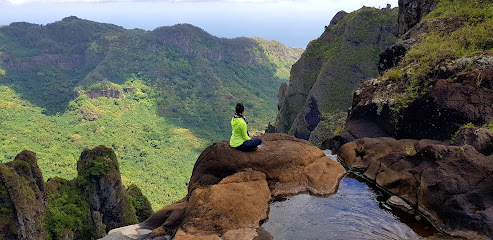
Calvary Cemetery - Paul Gauguin grave
Explore the serene Calvary Cemetery, the final resting place of Paul Gauguin, nestled in the stunning landscapes of Hiva Oa, French Polynesia.

Marquises Diving
Discover the underwater wonders of Hiva Oa at Marquises Diving, where adventure meets breathtaking marine biodiversity in French Polynesia.
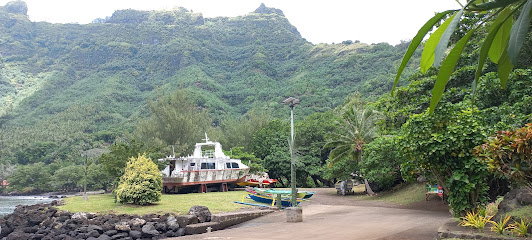
HANATEKUUA BEACH
Experience the serene beauty of Hanatekuua Beach in Hiva Oa, a tranquil haven for relaxation, snorkeling, and breathtaking sunsets.
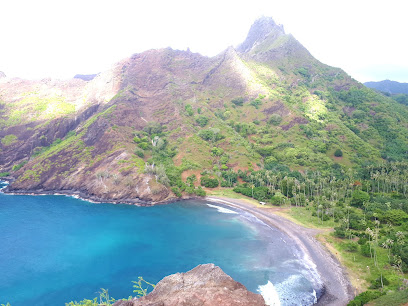
TIKI TUHIVA
Explore the vibrant culture and artistic heritage at TIKI TUHIVA in Nuku Hiva, a captivating cultural center in the heart of French Polynesia.
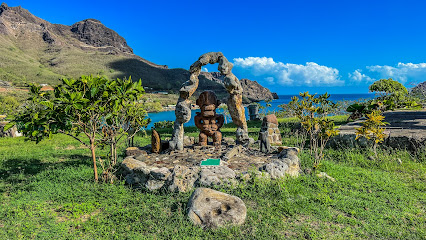
Tiki Souriant
Discover the enchanting beauty of Tiki Souriant, a scenic spot in Hiva Oa, where nature’s tranquility meets the vibrant culture of French Polynesia.

Pension Kanahau
Experience the charm of Hiva Oa at Pension Kanahau, a cozy bed and breakfast surrounded by stunning landscapes and rich local culture.
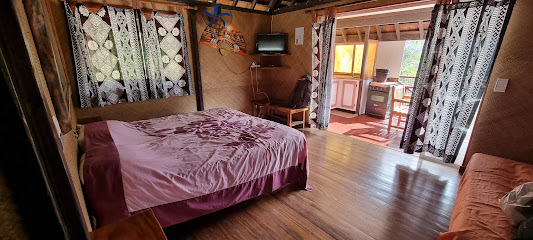
Hatutu
Experience the serene beauty of Hatutu Island in French Polynesia, a hidden gem for relaxation and adventure amidst breathtaking landscapes.

Nuku Hiva Pitake Lodge
Discover the enchanting Nuku Hiva Pitake Lodge, where stunning landscapes meet warm hospitality in French Polynesia's serene paradise.
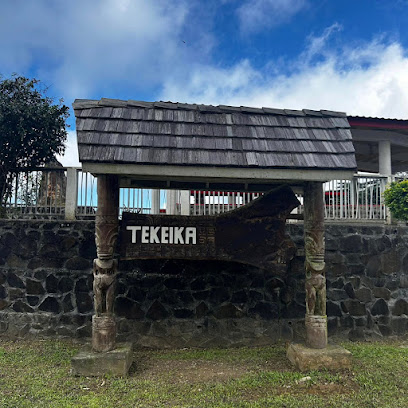
Ensemble Tahakia Kamuihei Teiipoka
Explore the breathtaking Ensemble Tahakia Kamuihei Teiipoka, a serene park in Nuku Hiva that showcases the stunning natural beauty of French Polynesia.
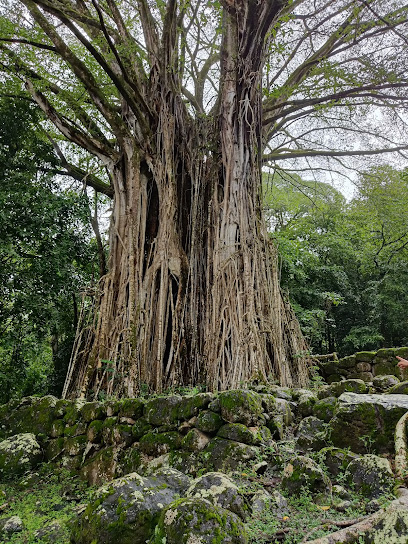
Unmissable attractions to see
HANATEKUUA BEACH
Explore the breathtaking beauty of Hanatekuua Beach, a serene escape in Hiva Oa, French Polynesia, where nature and tranquility meet.
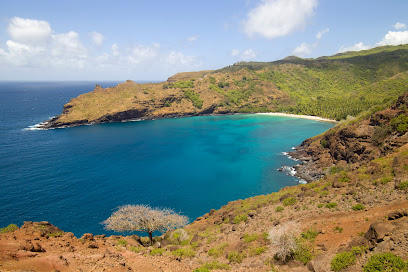
Tiki Souriant
Discover Tiki Souriant, a scenic paradise in Hiva Oa, where breathtaking views meet ancient Polynesian culture.

TIKI TUHIVA
Explore the vibrant culture of the Marquesas Islands at Tiki Tuhiva, a must-visit cultural center in Nuku Hiva, French Polynesia.
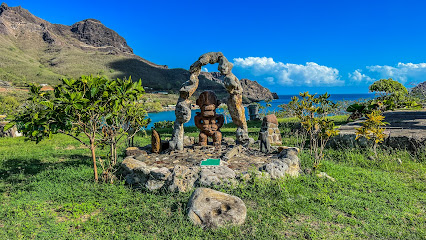
Centre cérémoniel Upeke
Explore the sacred Centre cérémoniel Upeke in Hiva Oa, a spiritual haven reflecting the rich cultural heritage of the Marquesas Islands.
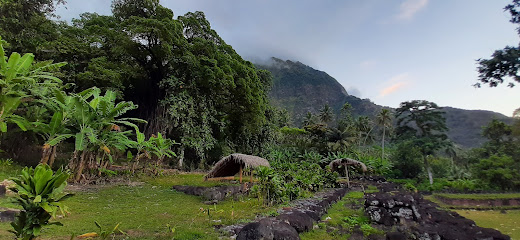
Eglise Hapatoni
Discover the tranquil Église Hapatoni in Tahuata, a cultural gem of French Polynesia showcasing stunning architecture and serene surroundings.
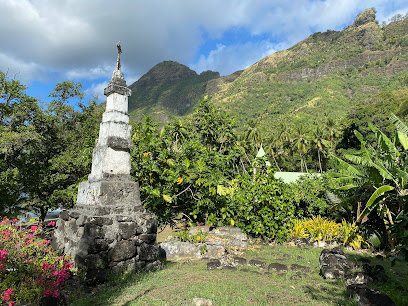
Essential places to dine
EURL HINAKO-NUI (Chez Yvonne KATUPA)
Experience authentic Polynesian cuisine at EURL HINAKO-NUI (Chez Yvonne KATUPA) in Nuku Hiva – a true culinary gem amidst breathtaking landscapes.

Snack du Marché
Experience authentic French Polynesian cuisine at Snack du Marché, where fresh ingredients meet island hospitality.
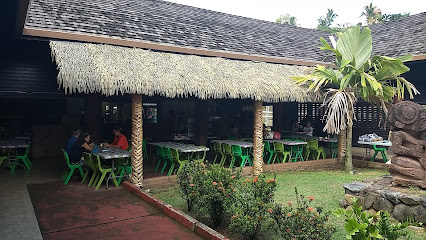
Snack Vaeaki
Discover authentic Polynesian cuisine at Snack Vaeaki in Nuku Hiva, where every dish tells a story of culture and flavor.
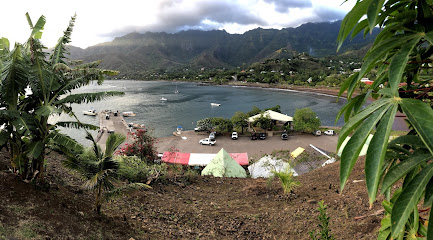
chez Jimmy RESTAURANT WIFI
Experience authentic Marquesan flavors at Chez Jimmy Restaurant in Vaitahu, Tahuata – a true culinary delight in French Polynesia.
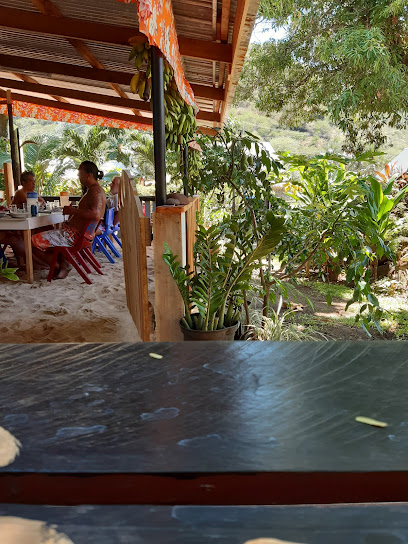
Restaurant CHEZ MARIE ANTOINETTE PEHEKUA
Discover the flavors of French Polynesia at Restaurant CHEZ MARIE ANTOINETTE PEHEKUA—where family-friendly dining meets culinary excellence.
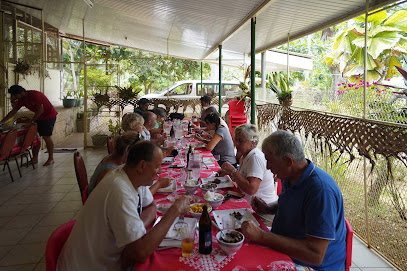
Restaurant Kaniho ( David )
Discover authentic Polynesian cuisine at Restaurant Kaniho in Nuku Hiva, where fresh flavors meet breathtaking island views.
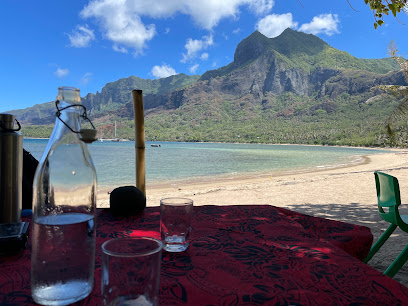
Yacht Services Nuku-Hiva
Discover yacht services, boat tours, and local cuisine at Yacht Services Nuku-Hiva - your one-stop destination in French Polynesia.

Tipiero
Discover authentic Polynesian flavors at Tipiero in Ua-Pou - a must-visit culinary destination for every traveler.
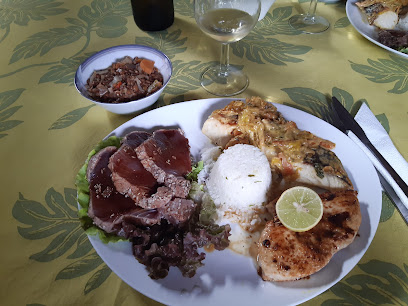
Boulangerie-snack joseph
Experience authentic flavors at Boulangerie-Snack Joseph in Nuku Hiva – a delightful bakery offering fresh pastries and local delicacies.
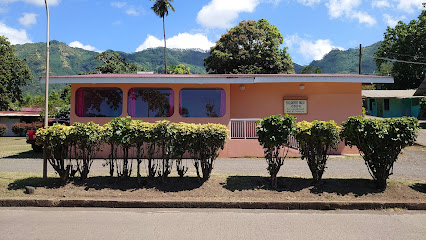
Restaurant Hoa Nui
Experience authentic Polynesian cuisine at Restaurant Hoa Nui in Hiva Oa - a culinary journey infused with local flavors and warm hospitality.
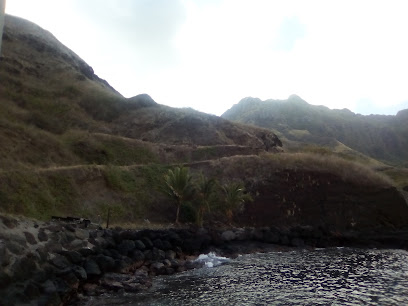
Snack Vehine (chez Claire)
Experience authentic French Polynesian cuisine at Snack Vehine (chez Claire) in beautiful Ua-Pou, where every dish tells a story.
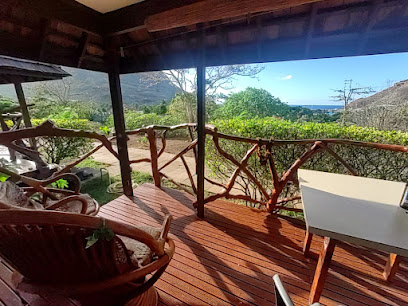
Snack Nuutina
Discover authentic Polynesian flavors at Snack Nuutina in Fatu Hiva - where every meal is a celebration of local culture and cuisine.
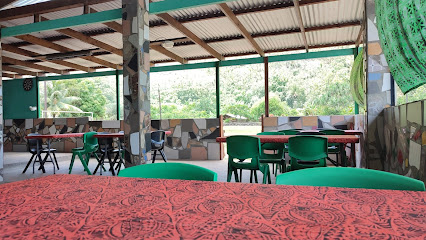
Roulotte Aniheana
Discover Roulotte Aniheana: A delightful dining experience in Hiva Oa serving authentic Polynesian cuisine amidst breathtaking island views.
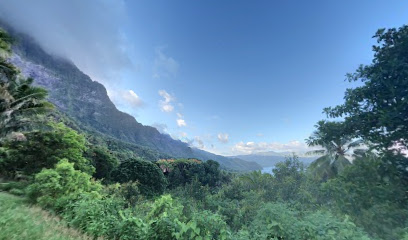
Rose TiMAU (Repas Marquisien)
Experience authentic Polynesian cuisine at Rose TiMAU in Tahuata – where every dish tells a story of tradition and flavor.
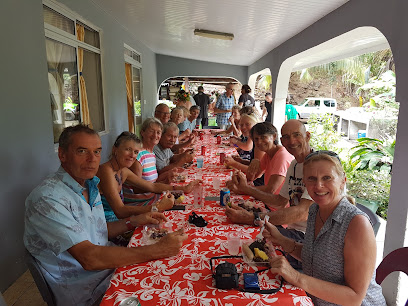
Restaurant Rosalie
Experience exquisite dining at Restaurant Rosalie in Ua-Pou, where local flavors meet French culinary artistry amid breathtaking island views.
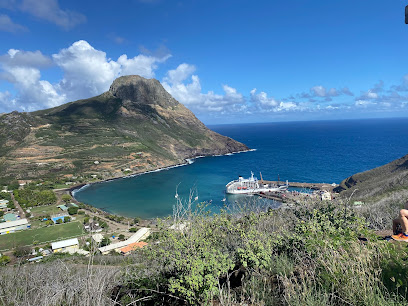
Markets, malls and hidden boutiques
HIVA OA SHOP AND RENT
Discover the beauty of Hiva Oa, French Polynesia with convenient car rentals for a memorable island adventure.
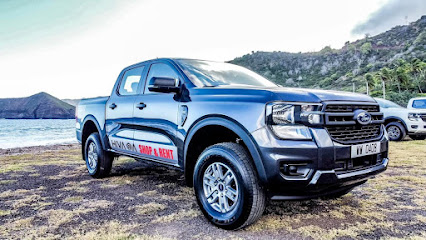
Tavaiki Patoo
Discover the artistry of Polynesian tattoos at Tavaiki Patoo, where tradition meets contemporary design in the heart of Nuku Hiva.
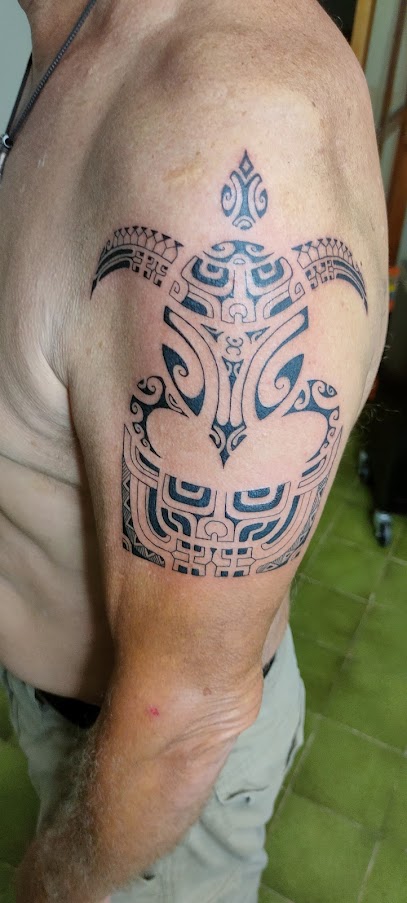
Magasin GAUBIL
Explore local flavors and essentials at Magasin GAUBIL, the charming grocery store in Hiva Oa, French Polynesia.
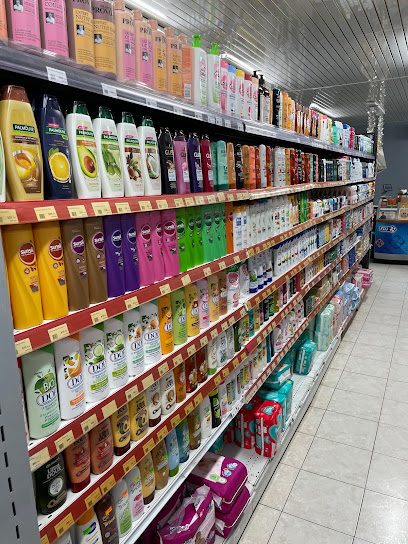
MAGASIN LARSON
Discover the flavors of Nuku Hiva at Magasin Larson, your go-to grocery store for local delicacies and imported goods in French Polynesia.
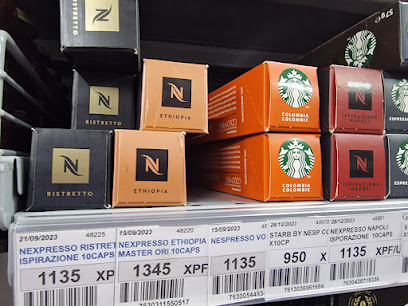
Magasin Hoata
Explore the vibrant local flavors and essential goods at Magasin Hoata, your ultimate supermarket destination in Nuku Hiva.
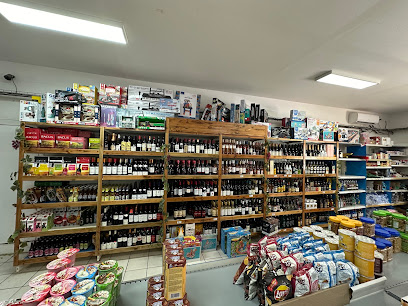
Centre Artisanal
Explore the vibrant Centre Artisanal in Ua-Pou for unique local crafts, authentic souvenirs, and an immersive cultural experience.
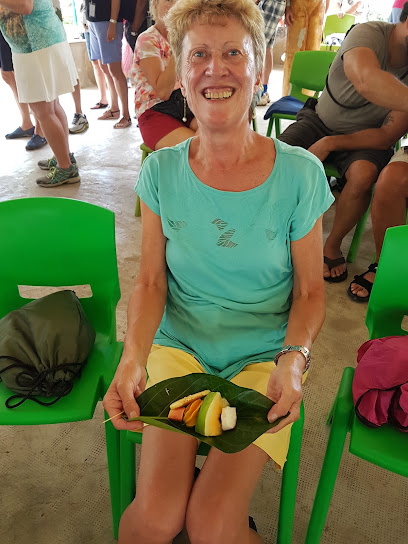
Magasin NAIKI
Discover the flavors of Hiva Oa at Magasin NAIKI, a local grocery store offering a taste of authentic French Polynesia.
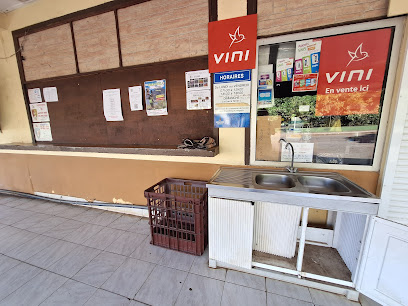
BOULANGERIE SNACK HIAMOEKUHA - Laverie
Discover the flavors of French Polynesia at Boulangerie Snack Hiamoekuhua, where fresh bread and pastries await every visitor.

Magasin BIGOT
Explore local culture and craftsmanship at Magasin BIGOT, a unique hardware store in Nuku Hiva, French Polynesia.
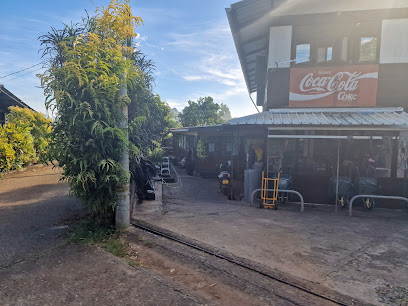
Elekinfo Marquises
Discover the best electronics at Elekinfo Marquises in Nuku Hiva, where quality tech meets island lifestyle.
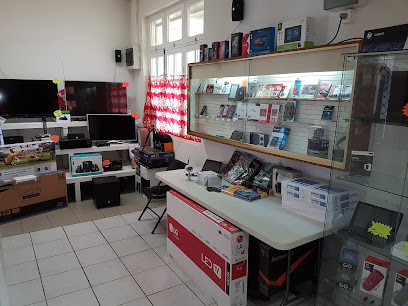
Magasin Céline
Explore the charm of Nuku Hiva at Magasin Céline, where local crafts and fresh baked goods await every curious traveler.
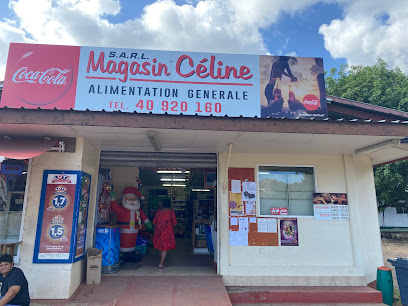
Vaitahu Market
Discover the vibrant flavors and local culture at Vaitahu Market, a must-visit spot for tourists in Tahuata, French Polynesia.
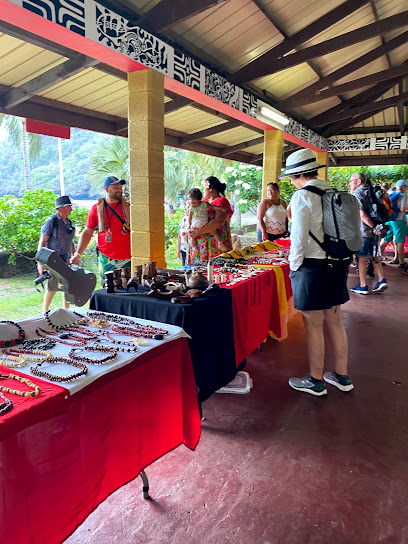
Magasin Marielle
Explore local flavors and essentials at Magasin Marielle, the island’s vibrant supermarket in Ua-Pou, French Polynesia.

Nuku Tai Nui Marine (MMS)
Explore the vibrant marine life of Nuku Hiva with Nuku Tai Nui Marine, your go-to store for supplies and local crafts in French Polynesia.
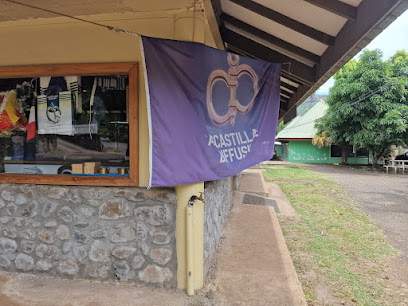
Tattoo Studio
Discover the artistry of tattoo culture in Hiva Oa, where skilled artists turn your ideas into stunning body art in a welcoming environment.
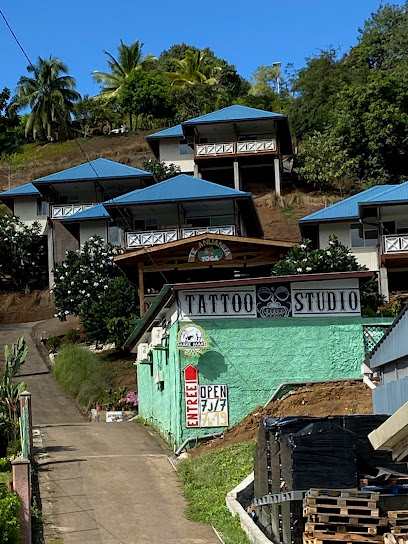
Essential bars & hidden hideouts
EURL HINAKO-NUI (Chez Yvonne KATUPA)
Experience the authentic tastes of French Polynesia at EURL Hinako-Nui, a culinary treasure in Nuku Hiva, perfect for all food lovers.
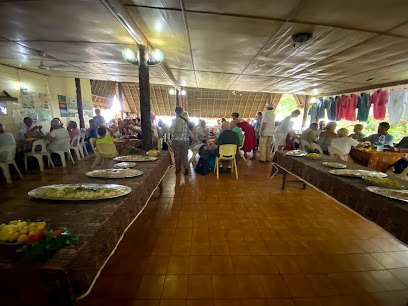
Snack du Marché
Experience the authentic flavors of Nuku Hiva at Snack du Marché, a local gem serving delicious Polynesian cuisine in a welcoming atmosphere.
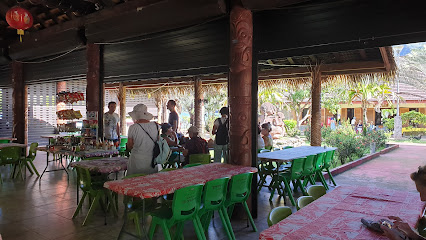
Snack Vaeaki
Discover the authentic flavors of Polynesia at Snack Vaeaki, an inviting restaurant in the heart of Nuku Hiva, where every dish tells a story.

chez Jimmy RESTAURANT WIFI
Experience the authentic flavors of the Marquesas Islands at Chez Jimmy, a beloved restaurant in Tahuata offering fresh, local cuisine in a warm atmosphere.
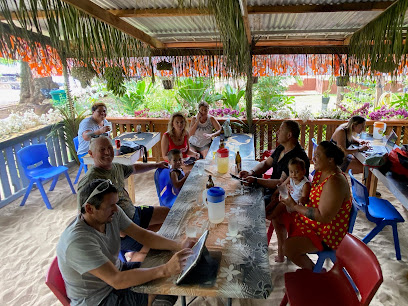
Restaurant CHEZ MARIE ANTOINETTE PEHEKUA
Experience the rich culinary heritage of French Polynesia at Restaurant CHEZ MARIE ANTOINETTE PEHEKUA, perfect for families and food lovers alike.

Tipiero
Discover the authentic taste of French Polynesia at Tipiero, a culinary gem in Ua-Pou, offering stunning views and exceptional local cuisine.
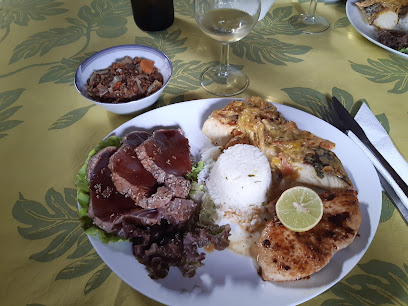
Restaurant Hoa Nui
Discover the flavors of French Polynesia at Restaurant Hoa Nui, a culinary treasure in Hiva Oa offering authentic dishes in a stunning setting.
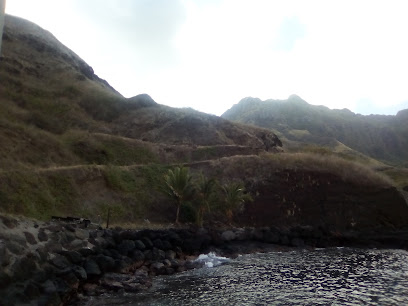
Snack Vehine (chez Claire)
Discover the authentic tastes of Polynesia at Snack Vehine (chez Claire), where local flavors and warm hospitality meet in Ua-Pou.
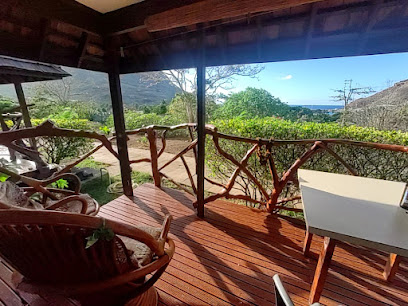
Snack Nuutina
Discover the authentic flavors of Fatu Hiva at Snack Nuutina, a charming restaurant offering local cuisine in a stunning island setting.
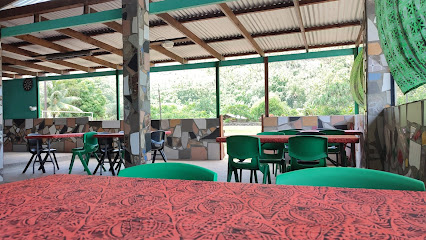
Roulotte Aniheana
Experience the vibrant flavors of French Polynesia at Roulotte Aniheana, a must-visit restaurant in the heart of Hiva Oa.
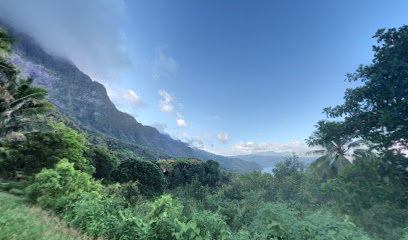
Rose TiMAU (Repas Marquisien)
Experience the rich flavors of Marquesian cuisine at Rose TiMAU, a culinary gem in Tahuata, French Polynesia. Savor fresh, local ingredients and vibrant culture.
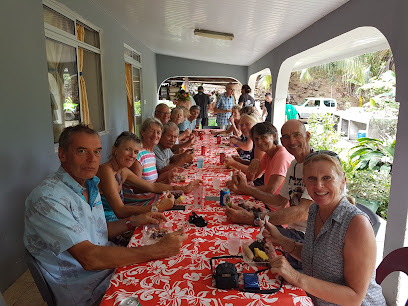
Restaurant/Bar KOVIVI
Discover KOVIVI in Nuku Hiva: a culinary paradise blending local flavors with breathtaking ocean views.

Chez iris
Discover authentic fast food delights at Chez Iris, a hidden gem in Hiva Oa, French Polynesia, where local flavors meet stunning ocean views.
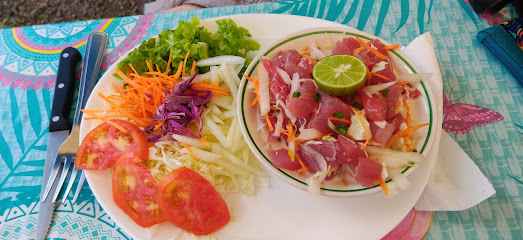
Chez Jaqueline
Experience the flavors of Polynesia at Chez Jaqueline, a family-friendly restaurant in Nuku Hiva offering delicious local cuisine in a warm atmosphere.
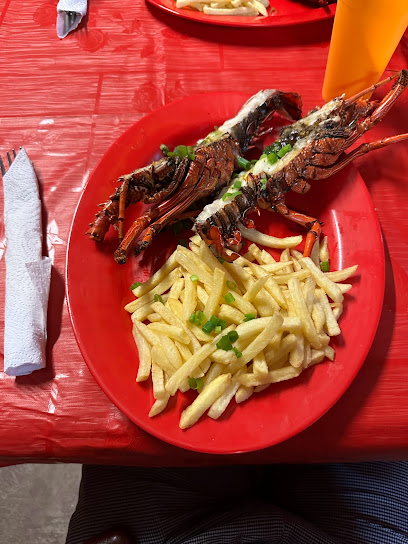
Drinking water station - public school
Experience the refreshing hydration of the public drinking water station in Hiva Oa, French Polynesia - a community hub amidst stunning landscapes.

Local Phrases
-
- HelloIa ora na
[yah oh-rah nah] - GoodbyeNana
[nah-nah] - YesE
[eh] - NoAita
[eye-tah] - Please/You're welcomeMāuruuru
[mah-oo-roo-roo] - Thank youMāuruuru
[mah-oo-roo-roo] - Excuse me/SorryTāvahi
[tah-vah-hee] - How are you?E aha ta'u?
[eh ah-hah tow-oo] - Fine. And you?Maita'i. E teie 'oe?
[my-tah-ee. eh tay-ee-eh oh-eh] - Do you speak English?Ua haere 'oe i te ha'ere 'anglais?
[oo-ah ha-eh-ray oh-eh ee tay ha-eh-ray ahn-glay] - I don't understandAita e ha'amaitai
[eye-tah eh hah-ah-my-tie]
- HelloIa ora na
-
- I'd like to see the menu, pleaseE vahine 'oe i te menu, māuruuru
[eh vah-hee-nay oh-eh ee tay may-noo, mah-oo-roo-roo] - I don't eat meatAita e 'ai i te manu
[eye-tah eh eye ee tay mah-noo] - Cheers!Manuia!
[mah-noo-ee-ah] - I would like to pay, pleaseE ha'apao'a 'oe, māuruuru
[eh hah-ah-pow-ah oh-eh, mah-oo-roo-roo]
- I'd like to see the menu, pleaseE vahine 'oe i te menu, māuruuru
-
- Help!Aita!
[eye-tah] - Go away!Haere i te hō'ē!
[high-ray ee tay hoh-eh] - Call the Police!Tatau i te gendarmerie!
[tah-tow ee tay jen-dar-may-ree] - Call a doctor!Tatau i te taata rahi!
[tah-tow ee tay tah-tah rah-hee] - I'm lostUa haere 'oe i te ha'ere 'anglais?
[oo-ah ha-eh-ray oh-eh ee tay ha-eh-ray ahn-glay] - I'm illUa haere 'oe i te ha'ere 'anglais?
[oo-ah ha-eh-ray oh-eh ee tay ha-eh-ray ahn-glay]
- Help!Aita!
-
- I'd like to buy...E 'oe i te hio...
[eh oh-eh ee tay hee-oh] - I'm just lookingE 'oe i te 'ite'a
[eh oh-eh ee tay ee-tay-ah] - How much is it?E hoe te moni?
[eh hoh-eh tay moh-nee] - That's too expensiveTeie te moni tei para
[tay-ee-eh tay moh-nee tay-ee pah-rah] - Can you lower the price?Aita'oe e pahono i te moni?
[eye-tah-oh-eh eh pah-ho-no ee tay moh-nee]
- I'd like to buy...E 'oe i te hio...
-
- What time is it?He aha te ha'ere?
[hay ah-hah tay ha-eh-ray] - It's one o'clockE tahi ha'ere
[eh tah-hee ha-eh-ray] - Half past (10)I te 'ahuru ātoru
[ee tay ah-hoo-roo ah-toh-roo] - MorningPō
[poh] - AfternoonApo'apo
[ah-poh-ah-poh] - EveningAti
[ah-tee] - YesterdayAro
[ah-roh] - TodayAnanahi
[ah-nah-nah-hee] - TomorrowApōpo
[ah-poh-poh] - 1Hiro
[hee-roh] - 2Piti
[pee-tee] - 3Toru
[toh-roo] - 4Maha
[mah-hah] - 5Pae
[pah-eh] - 6Ono
[oh-no] - 7Fitu
[fee-too] - 8Varu
[vah-roo] - 9Iva
[ee-vah] - 10Ahuru
[ah-hoo-roo]
- What time is it?He aha te ha'ere?
-
- Where's a/the...?Tei hea te...?
[tay hay-ah tay] - What's the address?He aha te arohī?
[hay ah-hah tay ah-roh-hee] - Can you show me (on the map)?E ha'amā teie i te mahere?
[eh hah-ah-mah tay-ee ee tay mah-hay-ray] - When's the next (bus)?He aha te ha'ere 'āmuri?
[hay ah-hah tay ha-eh-ray ah-moo-ree] - A ticket (to ....)Te ha'ere (ki ...)
[tay ha-eh-ray (kee)]
- Where's a/the...?Tei hea te...?
History of Marquesas Islands
-
The Marquesas Islands were first settled by Polynesians around 200 AD. These early navigators arrived from Western Polynesia, bringing with them their rich culture, traditions, and advanced knowledge of navigation. The islands became a cradle of Polynesian culture, with distinct social structures, religious practices, and impressive stone constructions, including marae (sacred sites) and tiki statues.
-
The first European to sight the Marquesas Islands was the Spanish explorer Álvaro de Mendaña in 1595. He named them 'Las Islas Marquesas de Mendoza' in honor of the Viceroy of Peru. Subsequent visits by European explorers, including James Cook in 1774, brought the islands into contact with the wider world, leading to significant changes in the local way of life.
-
In the early 19th century, Christian missionaries arrived in the Marquesas Islands, aiming to convert the indigenous population. The London Missionary Society began its work in 1797, followed by Catholic missionaries in 1838. The missionaries' influence led to the suppression of traditional religious practices and significant cultural shifts as the islanders adopted Christianity and Western customs.
-
The Marquesas Islands became a French protectorate in 1842 when Rear Admiral Abel Aubert du Petit-Thouars claimed the islands for France. This marked the beginning of French colonial rule, which brought new administrative structures, economic changes, and increased interaction with the global economy. The islands were incorporated into French Polynesia in 1880, further solidifying French control.
-
The Marquesas Islands have long been a source of inspiration for artists and writers. The French painter Paul Gauguin spent his final years on the island of Hiva Oa, where he created some of his most famous works. Additionally, the American author Herman Melville, who visited the islands in 1842, used his experiences as the basis for his novel 'Typee,' which provides a vivid account of life in the Marquesas during the 19th century.
-
During World War II, the Marquesas Islands held strategic importance in the Pacific theater. The islands served as a refueling station for Allied forces, and the presence of American troops brought further cultural exchanges and modernization to the islands. The war's end saw a gradual return to traditional ways of life, albeit influenced by the global events that had unfolded.
-
In recent decades, there has been a strong movement to revitalize and preserve the unique cultural heritage of the Marquesas Islands. Efforts include the revival of traditional arts, crafts, and dances, as well as the preservation of the Marquesan language. Festivals and cultural events, such as the biennial Marquesas Arts Festival, celebrate the rich history and traditions of the islands, ensuring that they are passed down to future generations.
Marquesas Islands Essentials
-
The Marquesas Islands are located in French Polynesia, and the primary way to get there is by air. Most international travelers will need to fly into Tahiti's Faa'a International Airport (PPT) first. From Tahiti, you can catch a domestic flight via Air Tahiti to Nuku Hiva or Hiva Oa, the two main islands with airports. Flights to the Marquesas are limited, so it is advisable to book well in advance. There are also occasional cargo ships that serve the islands, but these are less reliable for passenger travel.
-
Transportation within the Marquesas Islands can be limited, so planning ahead is crucial. Car rentals are available on the main islands of Nuku Hiva and Hiva Oa, and these are the most convenient way to explore. Taxis are also available but can be expensive. For inter-island travel, you can use small boats or inter-island flights operated by Air Tahiti. Be prepared for rugged terrain and unpaved roads, especially if you plan to explore more remote areas.
-
The official currency in the Marquesas Islands is the French Pacific Franc (XPF). Credit cards are accepted in some hotels, restaurants, and shops, but it is advisable to carry cash, especially in smaller establishments and remote areas. ATMs are limited, so ensure you have enough cash on hand before traveling to more isolated parts of the islands.
-
The Marquesas Islands are generally safe for tourists. However, like any destination, it's advisable to take standard precautions. Avoid walking alone at night in unfamiliar areas and keep an eye on your belongings in crowded places. The islands do not have high-crime areas specifically targeting tourists, but it's always best to stay vigilant and aware of your surroundings.
-
In case of emergency, dial 17 for police assistance and 15 for medical emergencies. The main islands have medical facilities, but they may be limited in comparison to those in larger cities. It is highly recommended to have travel insurance that covers medical emergencies. For minor health issues, there are pharmacies where you can purchase over-the-counter medications.
-
Fashion: Do dress modestly, especially when visiting religious or cultural sites. Avoid wearing overly revealing clothing. Religion: Do respect local customs and traditions. Participate respectfully in cultural ceremonies if invited. Public Transport: Do be patient, as transport schedules can be irregular. Don't expect the same level of service as in more developed areas. Greetings: Do greet people with a friendly 'Bonjour' or 'Ia Orana.' A gentle handshake is also appropriate. Eating & Drinking: Do try local delicacies and accept food offerings graciously. Don't refuse hospitality, as it is considered impolite.
-
To experience the Marquesas Islands like a local, visit local markets where you can buy fresh produce and traditional Polynesian goods. Engage with locals, who are often friendly and willing to share stories about their culture and history. Don't miss participating in traditional dance and music performances, which are integral to Marquesan culture. Exploring the islands' archaeological sites, such as Tiki statues and ancient petroglyphs, will also provide a unique insight into the region's rich heritage.
Trending Landmark in Marquesas Islands
-
Nuku Hiva Keikahanui Pearl Lodge
-
Hôtel Hiva Oa Hanakee Lodge
-
Pension Temetiu Village
-
Nuku Hiva
-
Snack Vaeaki
-
Vaipō Waterfall
-
Calvary Cemetery - Paul Gauguin grave
-
Marquises Diving
-
HANATEKUUA BEACH
-
TIKI TUHIVA
-
Tiki Souriant
-
Pension Kanahau
-
Hatutu
-
Nuku Hiva Pitake Lodge
-
Ensemble Tahakia Kamuihei Teiipoka
Nearby Cities to Marquesas Islands
-
Things To Do in Nuku Hiva
-
Things To Do in Rangiroa
-
Things To Do in Tetiaroa
-
Things To Do in Tahiti
-
Things To Do in Papeete
-
Things To Do in Moorea
-
Things To Do in Huahine
-
Things To Do in Raiatea
-
Things To Do in Bora Bora
-
Things To Do in Maupiti
-
Things To Do in Bounty Bay Settlement
-
Things To Do in Kiritimati
-
Things To Do in Matavera
-
Things To Do in Muri
-
Things To Do in Ngatangiia


